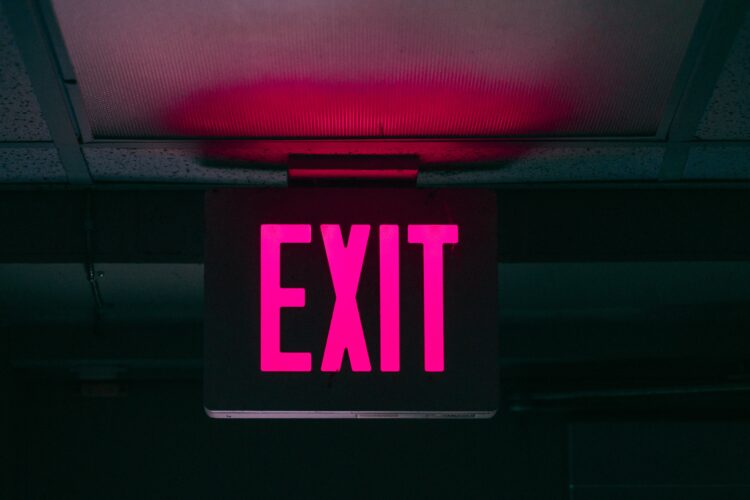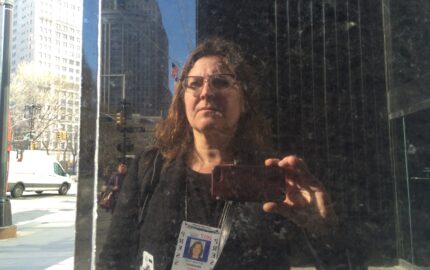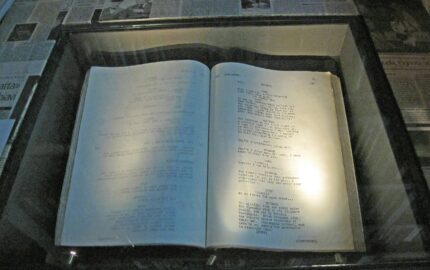By Jacqui Banaszynski
I still remember, with a wince and a laugh, the time I was fretting over a conference keynote. I had X amount of time, X-plus amount of material and X-to-the-10th-degree amount of insecurity. That was not a new feeling for me when speaking in public — or writing a story for publication. But this time I must have been really desperate because I called Mountain Editor, who is wise (when he's paying attention) but can be cryptic and has a tendency to shrug at my stress. His most common response: "You'll be great." (Ha! Easy for him to say when I'm the one who has to do.)
Anyway, this time he took one of those veers that gets my attention. After I yammered my worries, he simply said: "A lot of people keep talking after others have stopped listening."
After some huffing, I went back to my keynote draft with a bright turquoise Sharpie and got clear: This is what I want to say. This is why. This is where I will start. These are the select points along the way, and the examples that will illuminate them. And this — the hardest part — is how I'll nail that ending. In other words, this is where I'll leave the audience — ideally while they're still listening.
We know the importance of endings in speeches and movies. We need to apply the same attention in our written work — perhaps even more, because if we've carried a reader through a long and complex piece only to leave them bored or baffled at the end, we have failed. Or at least not done a very good job.
Yet how to best end a story is one of the issues that comes up again and again in the coaching and editing I do and the workshops I lead. No surprise: Journalists spend a lot of time, attention and angst on ledes. Our endings: Too often an afterthought — and a lost opportunity.
Endings deserve the same attention we pay to our story starts. If you scan any Storyboard annotation, decisions about where to end a narrative is a key part of that conversation. Sometimes the writer knows with certitude how they want to end a piece; some even divine their ending before they start writing, then write to that end. Others discover their ending as they write. And others try on multiple endings until deadline requires a choice.
I'm one of those writers who, on good days, find the ending while writing — and fretting. Too often I run out of time and accept the tyranny (gift?) of deadline: SHRUG and SEND. As an editor, I have learned to spend as much time hunting for a writer's ending as I do on their start and their structure. (It's always easier to do with someone else's work than with my own.) Often I find it a few paragraphs above the ending of a draft. And too often I find that a writer does with text what radio and TV reporters do with a spoken story: End with some unnecessary walk-off, which usually shows up in written work as an unneeded quote — one that is desperate to tie a tidy bow on the very untidy real-world stories we tell.
That's when I draw on a slight tweak to Mountain Editor's advice: A lot of writers keep typing after the reader has stopped reading.
PS: For best-of practices on how to end narratives, read tips from Oregon writer Lauren Kessler.
I still remember, with a wince and a laugh, the time I was fretting over a conference keynote. I had X amount of time, X-plus amount of material and X-to-the-10th-degree amount of insecurity. That was not a new feeling for me when speaking in public — or writing a story for publication. But this time I must have been really desperate because I called Mountain Editor, who is wise (when he's paying attention) but can be cryptic and has a tendency to shrug at my stress. His most common response: "You'll be great." (Ha! Easy for him to say when I'm the one who has to do.)
Anyway, this time he took one of those veers that gets my attention. After I yammered my worries, he simply said: "A lot of people keep talking after others have stopped listening."
After some huffing, I went back to my keynote draft with a bright turquoise Sharpie and got clear: This is what I want to say. This is why. This is where I will start. These are the select points along the way, and the examples that will illuminate them. And this — the hardest part — is how I'll nail that ending. In other words, this is where I'll leave the audience — ideally while they're still listening.
We know the importance of endings in speeches and movies. We need to apply the same attention in our written work — perhaps even more, because if we've carried a reader through a long and complex piece only to leave them bored or baffled at the end, we have failed. Or at least not done a very good job.
Yet how to best end a story is one of the issues that comes up again and again in the coaching and editing I do and the workshops I lead. No surprise: Journalists spend a lot of time, attention and angst on ledes. Our endings: Too often an afterthought — and a lost opportunity.
Endings deserve the same attention we pay to our story starts. If you scan any Storyboard annotation, decisions about where to end a narrative is a key part of that conversation. Sometimes the writer knows with certitude how they want to end a piece; some even divine their ending before they start writing, then write to that end. Others discover their ending as they write. And others try on multiple endings until deadline requires a choice.
I'm one of those writers who, on good days, find the ending while writing — and fretting. Too often I run out of time and accept the tyranny (gift?) of deadline: SHRUG and SEND. As an editor, I have learned to spend as much time hunting for a writer's ending as I do on their start and their structure. (It's always easier to do with someone else's work than with my own.) Often I find it a few paragraphs above the ending of a draft. And too often I find that a writer does with text what radio and TV reporters do with a spoken story: End with some unnecessary walk-off, which usually shows up in written work as an unneeded quote — one that is desperate to tie a tidy bow on the very untidy real-world stories we tell.
That's when I draw on a slight tweak to Mountain Editor's advice: A lot of writers keep typing after the reader has stopped reading.
PS: For best-of practices on how to end narratives, read tips from Oregon writer Lauren Kessler.



